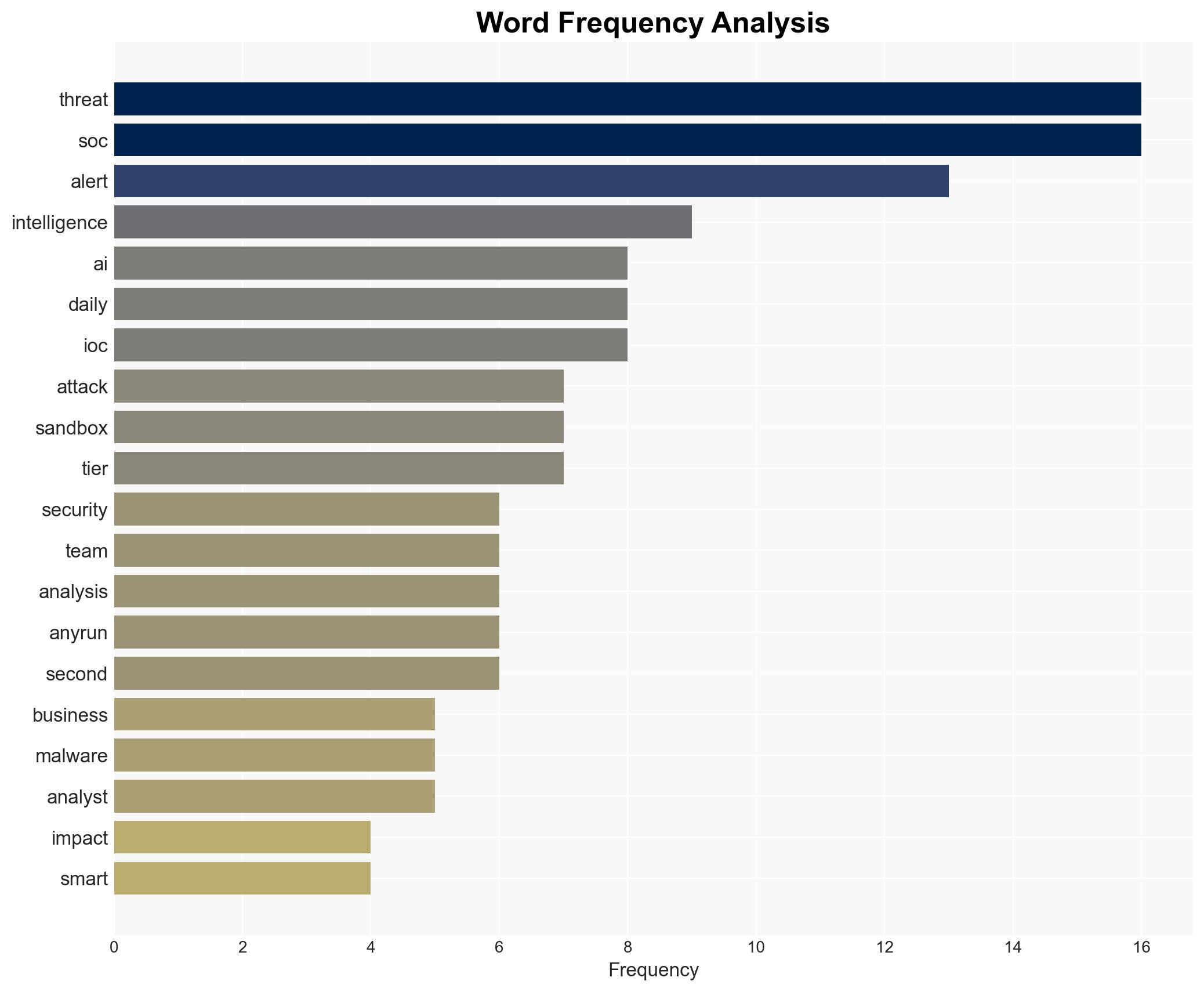3 SOC Challenges You Need to Solve Before 2026
Published on: 2025-11-25
AI-powered OSINT brief from verified open sources. Automated NLP signal extraction with human verification. See our Methodology and Why WorldWideWatchers.
Intelligence Report:
1. BLUF (Bottom Line Up Front)
With a high confidence level, the most supported hypothesis is that Security Operations Centers (SOCs) must rapidly adapt to emerging AI-driven threats by integrating advanced interactive malware analysis and threat intelligence tools. Failure to do so will likely result in significant operational disruptions and financial losses. Recommended action includes immediate investment in AI-enhanced security technologies and training to improve SOC efficiency and threat detection capabilities.
2. Competing Hypotheses
Hypothesis 1: SOCs will successfully adapt to AI-driven threats by integrating advanced technologies and improving processes, thereby maintaining operational continuity and compliance.
Hypothesis 2: SOCs will struggle to keep pace with the sophistication of AI-driven threats, leading to increased operational disruptions and financial losses.
Hypothesis 1 is more likely due to the availability of emerging technologies such as interactive malware analysis platforms and AI-driven threat intelligence, which can significantly enhance SOC capabilities. However, the successful implementation of these technologies depends on timely investment and organizational commitment.
3. Key Assumptions and Red Flags
Assumptions: It is assumed that SOCs have the financial and organizational capacity to invest in new technologies and that these technologies will be effective against evolving threats.
Red Flags: Indicators of potential deception include over-reliance on technology without adequate human oversight and the possibility of threat actors developing countermeasures to new security technologies.
4. Implications and Strategic Risks
The failure of SOCs to adapt could lead to cascading threats, including increased cyberattacks, regulatory penalties, and loss of customer trust. This could escalate into broader economic impacts, particularly for industries heavily reliant on digital infrastructure. Additionally, the proliferation of AI-driven threats could lead to geopolitical tensions as nation-states leverage these capabilities for cyber espionage or sabotage.
5. Recommendations and Outlook
- Actionable Steps: Invest in AI-enhanced security technologies, prioritize training for SOC personnel, and establish robust threat intelligence sharing networks.
- Best Scenario: SOCs effectively integrate new technologies, resulting in enhanced threat detection and prevention capabilities.
- Worst Scenario: SOCs fail to adapt, leading to significant operational and financial losses.
- Most-likely Scenario: A mixed outcome where some SOCs successfully adapt while others struggle, leading to uneven security postures across industries.
6. Key Individuals and Entities
Specific individuals are not mentioned in the source text. Key entities include SOC teams, cybersecurity technology providers, and business leaders responsible for security investments.
7. Thematic Tags
Structured Analytic Techniques Applied
- Adversarial Threat Simulation: Model and simulate actions of cyber adversaries to anticipate vulnerabilities and improve resilience.
- Indicators Development: Detect and monitor behavioral or technical anomalies across systems for early threat detection.
- Bayesian Scenario Modeling: Quantify uncertainty and predict cyberattack pathways using probabilistic inference.
Explore more:
Cybersecurity Briefs ·
Daily Summary ·
Support us





